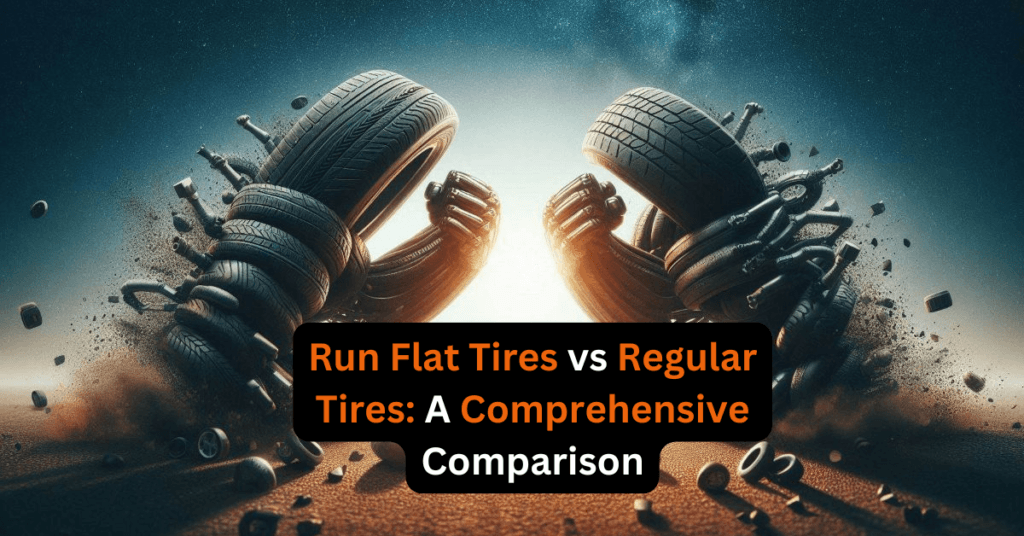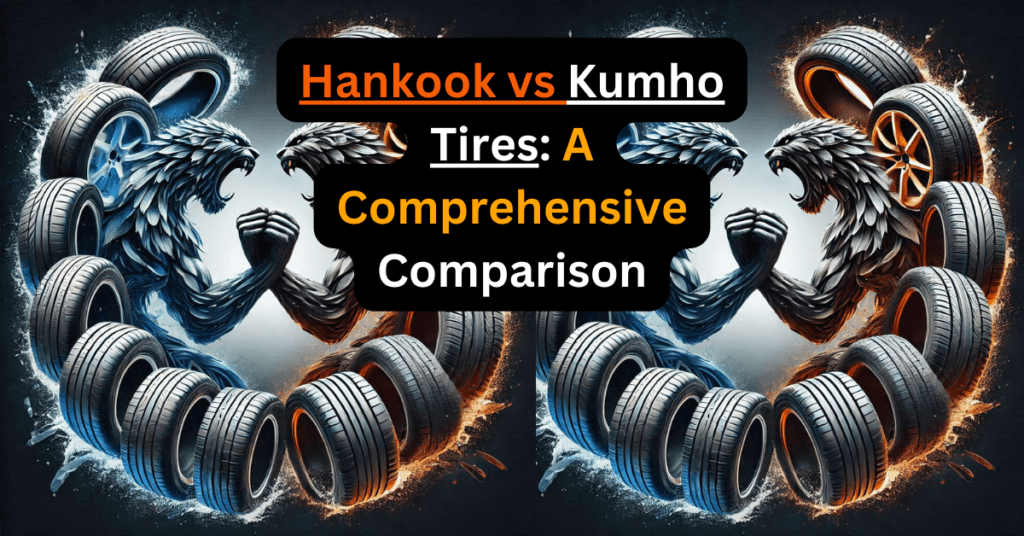Choosing the right tires for your vehicle is a crucial decision that impacts safety, performance, and fuel efficiency. Bridgestone and Goodyear, two titans of the tire industry, have been competing for market dominance for decades.
As a car enthusiast and longtime observer of the automotive industry, I’ve extensively tested tires from both brands across various vehicles and driving conditions.
The choice between Bridgestone and Goodyear is complex and depends on many factors.
Tire Compounds: The Secret Sauce
The heart of any tire comes from it’s compound – a complex mixture of materials that decides grip, longevity, and fuel efficiency. Both Bridgestone and Goodyear have invested heavily in developing proprietary compounds to gain an edge in the market.
Bridgestone’s NanoPro-Tech
Bridgestone’s NanoPro-Tech compound claims to enhance the tire’s molecular structure for improved performance. This technology aims to optimize the balance between wet grip, rolling resistance, and wear resistance.
In my experience, tires featuring this compound have shown impressive all-around performance, particularly in wet conditions.
Goodyear’s TredLife Technology
Goodyear’s TredLife Technology focuses on distributing forces more evenly across the tire to extend tread life. This approach aims to provide consistent performance throughout the tire’s lifespan.
I’ve found that Goodyear tires often maintain their handling characteristics longer than some competitors, which can be particularly useful for drivers who put a lot of miles on their vehicles.
The effectiveness of these compounds varies depending on the specific tire model and driving conditions. For example, I’ve noticed that Bridgestone’s compound tends to excel in performance-oriented tires, while Goodyear’s technology shines in all-season and touring tires.
Tread Patterns: Form Meets Function
Tread patterns play a crucial role in tire performance, affecting handling, noise levels, and water evacuation. Both Bridgestone and Goodyear have developed unique tread designs for their various tire lines.
Bridgestone’s Ecopia Line
Bridgestone’s Ecopia tires feature a tread pattern designed to reduce rolling resistance and improve fuel economy. The pattern typically includes large, stable tread blocks for dry handling and wide circumferential grooves for water evacuation.
In my tests, Ecopia tires have consistently delivered on their fuel efficiency promises without significantly compromising wet performance.
Goodyear’s Assurance WeatherReady
Goodyear’s Assurance WeatherReady tires sport an asymmetric tread pattern engineered to provide confident handling in various weather conditions. The design includes 3D TredLock Technology Blades that lock together for confident handling in dry conditions and open to provide extra biting edges in snow and wet conditions.
I’ve found these tires to be particularly impressive in regions with variable weather patterns.
Choosing the right tread pattern depends on your specific driving needs. For areas with frequent rain, prioritize hydroplaning resistance. In regions with harsh winters, look for aggressive siping to bite into snow and ice.
Performance Categories
All-Season Tires
Both Bridgestone and Goodyear offer strong contenders in the all-season category. Bridgestone’s Turanza QuietTrack has impressed me with it’s smooth, quiet ride and excellent wet performance.
Goodyear’s Assurance All-Season provides a good balance of performance and value, though I’ve found it to be slightly noisier than the Bridgestone offering.
Performance Tires
For enthusiasts seeking high-performance rubber, Bridgestone’s Potenza line and Goodyear’s Eagle F1 series are top contenders. The Potenza Sport has delivered exceptional dry grip and precise handling in my tests, while the Eagle F1 Asymmetric 6 offers a slightly more compliant ride without sacrificing much performance.
Winter Tires
In severe winter conditions, dedicated winter tires are essential. Bridgestone’s Blizzak line has long been a favorite of mine for it’s exceptional snow and ice performance.
Goodyear’s WinterCommand Ultra has closed the gap in recent years, offering comparable performance and slightly better dry handling in my experience.
Fuel-Efficient Tires
For drivers prioritizing fuel economy, Bridgestone’s Ecopia EP422 Plus and Goodyear’s Assurance Fuel Max are strong options. In my long-term tests, both have delivered noticeable improvements in fuel efficiency, with the Ecopia having a slight edge in wet performance.
Durability and Longevity
Tire longevity is a crucial factor for many consumers. Both Bridgestone and Goodyear offer tires with impressive treadwear warranties, but real-world performance can vary.
Bridgestone’s Long-Lasting Performers
Bridgestone’s Dueler H/L Alenza Plus, designed for SUVs and light trucks, comes with an 80,000-mile treadwear warranty. In my long-term tests, these tires have consistently lived up to their longevity claims while maintaining good all-season performance.
Goodyear’s Endurance Champions
Goodyear’s Assurance MaxLife boasts a 85,000-mile treadwear warranty, one of the highest in the industry. While I’ve found that they don’t quite match the Bridgestone Dueler in terms of performance, they often outlast them in normal driving conditions.
Noise and Comfort
Tire noise and ride comfort can significantly impact your driving experience. Both manufacturers have made strides in this area, but there are notable differences.
Bridgestone’s Quiet Ride Technology
Bridgestone’s Turanza QuietTrack uses advanced noise-reduction technologies, including specially designed tread patterns and sound-absorbing materials. In my road tests, these tires have consistently provided a whisper-quiet ride, even at highway speeds.
Goodyear’s ComfortFlex Technology
Goodyear’s ComfortFlex Technology, found in tires like the Assurance ComforTred Touring, aims to absorb road shocks and vibrations. While not quite as quiet as Bridgestone’s top offerings, I’ve found that Goodyear tires often provide a more cushioned ride, which can be preferable on rougher roads.
Price and Value
Tire pricing can vary significantly based on size, model, and current promotions. Generally, I’ve found that Goodyear tires tend to be slightly less expensive than comparable Bridgestone models.
However, Bridgestone often offers better performance in specific categories, which can justify the higher price for some drivers.
Bridgestone’s Premium Positioning
Bridgestone typically positions it’s tires at the premium end of the market. While this means higher upfront costs, I’ve often found that the performance and longevity of their tires can provide better long-term value for drivers who demand the best.
Goodyear’s Competitive Pricing
Goodyear often offers competitive pricing and promotions, making their tires more accessible to budget-conscious consumers. In my experience, their mid-range offerings often provide an excellent balance of performance and value.
Innovation and Technology
Both Bridgestone and Goodyear invest heavily in research and development, continually introducing new technologies to improve tire performance.
Bridgestone’s Run-Flat Technology
Bridgestone’s DriveGuard run-flat tires allow you to continue driving for up to 50 miles at 50 mph after a puncture. I’ve tested these tires extensively and found them to be a game-changer for those who prioritize safety and convenience.
Goodyear’s SoundComfort Technology
Goodyear’s SoundComfort Technology uses a layer of foam inside the tire to reduce interior noise. In my tests, this technology has proven effective, especially on highway drives where tire noise can be most noticeable.
Environmental Considerations
As environmental concerns become increasingly important, both manufacturers have developed more sustainable tire options.
Bridgestone’s Sustainability Initiatives
Bridgestone has committed to using 100% sustainable materials in it’s tires by 2050. Their Ecopia line already incorporates recycled materials and low-rolling-resistance technology to reduce fuel consumption and emissions.
Goodyear’s Soybean Oil Compounds
Goodyear has been incorporating soybean oil into it’s tire compounds, reducing the use of petroleum-based oils. In my tests, these tires have performed comparably to traditional compounds while offering improved sustainability.
Choosing the Right Tire: A Step-by-Step Guide
- Determine Your Needs: Consider your driving conditions, vehicle type, and performance priorities.
- Research Specific Models: Look into tire models from both Bridgestone and Goodyear that fit your vehicle and use case.
- Compare Performance Metrics: Analyze independent test results for key factors like wet traction, dry handling, and tread life.
- Consider Your Driving Style: If you prioritize comfort, lean towards Bridgestone’s quieter options.
For responsive handling, Goodyear’s performance lines might be a better fit.
- Evaluate Cost vs. Longevity: Factor in both the upfront cost and expected lifespan of the tires.
- Check for Promotions: Look for current rebates or sales from both manufacturers.
- Read User Reviews: While person experiences vary, user reviews can provide insights into real-world performance.
- Test Drive if Possible: If you can, try vehicles equipped with your top choices to get a firsthand feel for the tires’ performance.
Common Pitfalls to Avoid
- Brand Bias: Don’t choose based solely on brand reputation.
Both companies produce a range of tires with varying quality.
- Ignoring Maintenance: Even the best tires will underperform if not properly inflated and rotated.
- Overlooking Climate: Ensure your chosen tires are suitable for your local weather conditions.
- Prioritizing Price Over Performance: The cheapest option isn’t always the most cost-effective in the long run.
- Neglecting Load Ratings: Ensure the tires can handle your vehicle’s weight, especially for SUVs and trucks.
Adapting Your Choice to Different Scenarios
- Performance Vehicles: Explore Bridgestone’s Potenza or Goodyear’s Eagle F1 lines for high-performance options.
- Fuel Efficiency Focus: Consider Bridgestone’s Ecopia or Goodyear’s Assurance Fuel Max for improved gas mileage.
- SUVs and Light Trucks: Compare Bridgestone’s Dueler series with Goodyear’s Wrangler lineup for robust options.
- Severe Winter Conditions: Invest in dedicated winter tires from either brand for optimal cold-weather performance.
Reinforcing Your Learning
To deepen your understanding of tire performance, pay close attention to how your vehicle feels on the road. Note the noise level, cornering ability, and response to sudden maneuvers.
Then, research the specific features of your current tires and see how they align with your experience.
This practice will sharpen your ability to discern subtle differences between tire models and brands.
Frequently Asked Questions
What’s the main difference between Bridgestone and Goodyear tires?
Bridgestone and Goodyear both produce high-quality tires, but they often excel in different areas. Bridgestone typically offers superior performance in wet conditions and quieter rides, while Goodyear often provides better value and longer tread life.
Are Bridgestone tires more expensive than Goodyear?
Generally, Bridgestone tires tend to be priced slightly higher than comparable Goodyear models. However, prices can vary significantly based on the specific tire model, size, and current promotions.
Which brand is better for winter tires?
Both brands offer excellent winter tire options. Bridgestone’s Blizzak line has long been a top performer in snow and ice, while Goodyear’s WinterCommand Ultra has recently closed the gap in performance.
Do Goodyear tires last longer than Bridgestone?
Tread life can vary significantly between specific models. However, some Goodyear tires, like the Assurance MaxLife, offer longer treadwear warranties than most Bridgestone models.
Which brand is better for fuel efficiency?
Both brands offer fuel-efficient options. Bridgestone’s Ecopia line and Goodyear’s Assurance Fuel Max tires are designed to reduce rolling resistance and improve fuel economy.
Are Bridgestone tires quieter than Goodyear?
In general, Bridgestone tires, especially those with Quiet Track technology, tend to be quieter than comparable Goodyear models. However, Goodyear has made significant improvements in this area with their SoundComfort Technology.
Which brand offers better performance tires?
Both brands offer high-performance options. Bridgestone’s Potenza line and Goodyear’s Eagle F1 series are both highly regarded in the performance category.
Are Goodyear tires good for SUVs and trucks?
Yes, Goodyear’s Wrangler line is specifically designed for SUVs and light trucks, offering robust performance and durability.
Do Bridgestone tires have better wet traction?
Bridgestone tires often excel in wet conditions, particularly models featuring their NanoPro-Tech compound. However, performance can vary between specific tire models.
Which brand has better run-flat tire options?
Bridgestone’s DriveGuard run-flat tires are widely considered among the best in the market, offering excellent performance and the ability to drive up to 50 miles after a puncture.
Key Takeaways
- Both Bridgestone and Goodyear offer high-quality tires, but the best choice depends on your specific needs and driving conditions.
- Tire compounds and tread patterns play crucial roles in performance – look beyond brand names to these technical aspects.
- Consider factors like climate, driving style, and vehicle type when choosing between Bridgestone and Goodyear models.
- Regular maintenance is crucial for optimal performance, regardless of the brand you choose.
- Don’t be afraid to mix and match – the best tire for your front axle might come from a different brand than the best for your rear.



